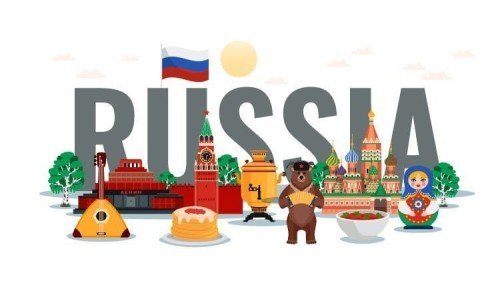Exploring the Complexities of the Russian Language: Grammar and Cyrillic Alphabet

Russian is an East Slavic language that is spoken as a mother tongue by around 155 million people worldwide. It is the most widely spoken Slavic language and is an official language in Russia, Belarus, Kazakhstan, Kyrgyzstan, and Tajikistan. Additionally, it is recognized as a minority language in many other countries, including Ukraine, Estonia, and Latvia.
The history of the Russian language can be traced back to the 10th century when Old East Slavic, a predecessor of modern Russian, was used as a written language. The language evolved over the centuries, influenced by various other languages, including Old Norse, Greek, Latin, and Mongolian.
Today, the Russian language is known for its complex grammar and pronunciation, which can pose a challenge for non-native speakers. However, despite its difficulty, Russian remains a popular language to learn, especially among students of history, politics, and literature.
The Russian language is known for its complex grammar, which can be challenging for non-native speakers to learn.
Here are some of the features of Russian grammar that make it unique:
-
Cases: Russian nouns, adjectives, pronouns, and numerals change their form depending on their grammatical function in a sentence. There are six cases in Russian: nominative, genitive, dative, accusative, instrumental, and prepositional. Each case has its own endings, and these endings must be learned for each word.
-
Verbs of motion: Russian has two different verbs for motion, one for going on foot (ходить/hodit') and one for going by vehicle (ездить/ezdit'). These verbs have different conjugations depending on the direction of motion and the mode of transportation.
-
Aspect: Russian verbs have two aspects, perfective and imperfective, which express different meanings. The perfective aspect is used for completed actions, while the imperfective aspect is used for ongoing or repeated actions.
-
Verb conjugation: Russian verbs have six different forms for each tense and aspect, depending on the subject pronoun. Additionally, there are irregular verbs that do not follow the regular conjugation patterns.
-
Gender: Russian nouns are either masculine, feminine, or neuter, and their endings change depending on their gender.
-
Word order: Russian word order is relatively free, and the meaning of a sentence can change depending on the placement of words. However, the default word order is subject-verb-object.
These are just a few examples of the complexities of Russian grammar. However, with practice and persistence, anyone can learn to navigate the intricacies of this fascinating language, much like distinguishing between superfoods and super scams (link in French) requires careful attention to detail.
One of the most distinctive features of the Russian language is its use of the Cyrillic alphabet. The Cyrillic script was developed in the 9th century and was based on the Greek alphabet. Over time, the Cyrillic script evolved and became the writing system used for many Slavic languages, including Russian.
The Cyrillic alphabet is used for writing many Slavic languages, including Russian. The Cyrillic script was developed in the 9th century and was based on the Greek alphabet. Over time, the Cyrillic script evolved and became the writing system used for many Slavic languages.
The Russian Cyrillic alphabet has 33 letters, including 10 vowels and 23 consonants.
The letters are divided into three groups based on their pronunciation:
-
Hard consonants: These are pronounced with a strong burst of air and include letters such as б (b), г (g), and д (d).
-
Soft consonants: These are pronounced with a softer burst of air and include letters such as бь (b'), гь (g'), and дь (d').
-
Vowels: There are 10 vowels in the Russian Cyrillic alphabet, including а (a), е (e), и (i), о (o), у (u), and я (ya), among others.
In addition to the standard Russian Cyrillic alphabet, there are also several additional letters and diacritics that are used in certain words and names. For example, the letters ё (yo) and ъ (hard sign) are used in some words to distinguish between different sounds or to clarify the grammatical structure of a sentence.
Learning the Cyrillic alphabet is an essential part of learning to read and write in Russian. It may seem daunting at first, but with practice, anyone can learn this script, just as exploring surprising culinary scenes (link in French) reveals unexpected layers of culture.
The Russian language has a rich literary tradition, with notable writers such as Leo Tolstoy, Fyodor Dostoevsky, and Anton Chekhov contributing to the canon of Russian literature. The language has also had a significant impact on world literature and has been translated into many languages.
In addition to its literary contributions, the Russian language has played a crucial role in science, technology, and space exploration. Its influence reflects broader debates about the future of democracy (link in French), where language, knowledge, and power intersect. Russian scientists and engineers have made significant contributions to fields such as mathematics, physics, and aerospace, and much of this research is published in Russian.
Overall, the Russian language is an essential part of world culture and history. Its complex grammar, rich literary tradition, and contributions to science and technology make it a fascinating language to learn and study. If you're interested in learning a new language, consider exploring the world of Russian.